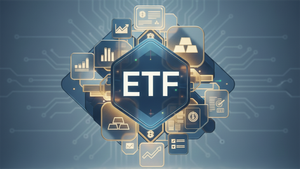
A wave of optimism has swept across global financial markets, extending far beyond the confines of Wall Street, as encouraging U.S. inflation data fuels expectations of imminent interest rate cuts by the Federal Reserve. This positive economic news from the United States has triggered a synchronized global market reaction, with major indices in Asia and Europe registering significant gains, signaling a collective sigh of relief among investors worldwide. The rally underscores a renewed confidence in the global economic outlook, with the prospect of lower borrowing costs acting as a powerful catalyst for asset prices.
The immediate implications of this global surge are profound, suggesting a potential easing of financial conditions that could stimulate economic activity and corporate earnings across various sectors. As U.S. Treasury yields ease in response to the data, reflecting increased bets on a Fed rate cut, the cost of capital for businesses and consumers alike is poised to decrease, potentially unlocking new avenues for growth and investment. This widespread positive sentiment highlights the interconnectedness of the global financial system, where economic signals from one major economy can reverberate across continents, shaping investment strategies and market trajectories.
What Happened and Why It Matters
The catalyst for this global market euphoria was the release of better-than-expected U.S. inflation figures, which significantly bolstered the likelihood of a Federal Reserve interest rate cut in the near future. While the core inflation report showed some acceleration, the market primarily focused on the easing of headline inflation, interpreting it as a clear signal that inflationary pressures are subsiding. This perception has led traders to price in a nearly 94% probability of a 25 basis point rate cut by the Fed in September, a move that would mark the first reduction of the year.
The immediate aftermath saw a robust rally in Asian markets, which were among the first to react to the news. Hong Kong's Hang Seng Index (HSI) surged, jumping 2.6% and 1.9%, while Japan's Nikkei 225 (NKY) climbed 1.3% and 1.6%, even reaching a fresh record high. South Korea's Kospi (KOSPI) also advanced, rising 1.1% and 0.8%. This widespread positive sentiment in Asia was further amplified by relief over an extended truce in the U.S.-China trade war, which averted an immediate escalation of tensions and provided additional impetus for market gains. Other Asian markets, including Shanghai's SSE Composite Index (000001.SS) and Singapore, also showed positive trends, with the Shanghai Composite adding 0.6% and Singapore and Malaysia gaining more than 1%.
European stock markets quickly followed suit, experiencing a significant upswing fueled by the growing conviction that the Federal Reserve will indeed cut rates. Germany's DAX (DAX) rose 0.7% and 0.6%, while France's CAC 40 (CAC) added 0.5% and 0.4%. The pan-European STOXX 600 (STOXX) also gained 0.2%. This positive movement in European equities was further supported by the U.S. extending its pause on higher tariffs for Chinese goods, which provided a sense of stability and reduced immediate trade-related uncertainties.
Concurrently, U.S. Treasury yields eased considerably in response to the positive inflation data, reflecting the increased investor confidence in impending rate cuts. The yield on the benchmark 10-year Treasury fell to 4.24% from 4.29% the previous day, and significantly from 4.50% in mid-July, marking a notable retreat for the bond market. The 2-year Treasury yield fell three basis points to 3.73%, and the 30-year yield eased to 4.85% from 4.89%. This decline in Treasury yields is crucial as lower borrowing costs are generally perceived as a significant boost to asset prices and overall economic activity, making it cheaper for companies to borrow and expand, and for consumers to finance purchases. This synchronized global reaction underscores the profound impact of U.S. monetary policy expectations on international financial markets.
The Shifting Tides: Winners and Losers in a Rate-Cut Environment
The global market rally, ignited by U.S. inflation optimism and the subsequent easing of Treasury yields, is poised to reshape the landscape for public companies and various sectors, creating distinct winners and losers. The prospect of lower interest rates and increased economic activity generally favors growth-oriented industries, while some defensive sectors may find themselves less attractive in this new environment.
The Technology Sector is widely anticipated to be a primary beneficiary. Reduced borrowing costs make it cheaper for tech companies, especially growth-oriented firms and startups, to invest in research and development, expand operations, and innovate. Lower interest rates also decrease the discount rate used in valuation models, which can lead to higher stock valuations for tech companies, particularly those with long-term growth potential. Mega-cap technology companies, especially those at the forefront of artificial intelligence (AI) and cloud computing, such as Microsoft (NASDAQ: MSFT), Amazon (NASDAQ: AMZN), and Nvidia (NASDAQ: NVDA), are expected to be significant drivers and beneficiaries of this rally. A weaker U.S. dollar, which can result from rate cuts, could also boost U.S. tech exports, further enhancing their profitability.
The Consumer Discretionary Sector, encompassing non-essential goods and services like automotive, travel, luxury goods, and home improvement, typically thrives during periods of increased economic activity and consumer confidence. Lower interest rates make financing large purchases, such as homes and cars, more affordable for consumers, thereby stimulating spending. As unemployment declines and disposable income potentially rises, demand for discretionary items is expected to surge. This cyclical sector historically performs well during economic recoveries, making companies like Tesla (NASDAQ: TSLA) or Marriott International (NASDAQ: MAR) potential winners.
The Real Estate Sector is also set to benefit significantly. Lower interest rates generally translate to reduced mortgage rates, which enhance housing affordability and can significantly boost housing market activity and demand, leading to higher home prices. Real Estate Investment Trusts (REITs) and property developers can benefit from lower borrowing costs for new projects and expansions. Investment trusts focused on property and infrastructure are also predicted to see gains from rate cuts, especially those currently trading at wide discounts. Furthermore, Small-Cap Companies often carry higher levels of debt compared to their larger counterparts, making them more sensitive to interest rate fluctuations. Consequently, they are poised to benefit more significantly from lower borrowing costs, which can alleviate financial pressures and improve their profitability.
Conversely, the Financial Services Sector, particularly banks, may face challenges. While lower interest rates can stimulate overall lending activity, they can also compress net interest margins (the difference between what banks earn on loans and pay on deposits), which can reduce their profitability. Companies like JPMorgan Chase (NYSE: JPM) or Bank of America (NYSE: BAC) might see their core lending profitability squeezed. Insurance companies, especially those with long-duration liabilities, may also be adversely affected as lower rates diminish the present value of their future cash flows. The Utilities Sector, often considered a defensive play attractive for its stable dividends in high-interest-rate environments, may become less appealing when long-term bond yields ease, as the income generated from utility stocks may become less attractive compared to bonds, potentially leading to underperformance for companies like Duke Energy (NYSE: DUK). The Energy Sector's performance is closely tied to global demand and oil prices. If declining interest rates are perceived as a signal of weaker economic growth, it could negatively impact demand for energy and, consequently, energy stock prices for companies like ExxonMobil (NYSE: XOM).
Industry Impact and Broader Implications
The current global market rally, spurred by U.S. inflation optimism and the subsequent easing of Treasury yields, represents a significant shift in the broader financial landscape, with far-reaching implications for various industries and the global economy. This event fits squarely into a broader trend of central banks navigating the delicate balance between controlling inflation and fostering economic growth. The market's enthusiastic response suggests a collective belief that the Federal Reserve is successfully steering the economy towards a "soft landing," where inflation is tamed without triggering a severe recession.
The potential ripple effects on competitors and partners across industries are substantial. For instance, in the technology sector, lower borrowing costs could intensify competition as companies find it easier to secure funding for innovation and expansion. This could lead to increased M&A activity as larger players seek to acquire promising startups or consolidate market share. Similarly, in the consumer discretionary sector, increased consumer spending fueled by lower interest rates could benefit a wide array of businesses, from retailers to travel companies, but also intensify competition for consumer dollars. Conversely, financial institutions might face increased pressure to innovate their product offerings and find new revenue streams to offset potential compression in net interest margins.
From a regulatory and policy perspective, the sustained optimism around inflation and interest rates could influence future central bank decisions globally. Other central banks, observing the Fed's potential path, might feel more emboldened to consider their own rate adjustments, leading to a more synchronized global monetary policy easing. This could further stimulate cross-border investment and trade. However, policymakers will also be keenly watching for any signs of renewed inflationary pressures or asset bubbles, which could necessitate a more cautious approach. The historical precedent of such market rallies often highlights the importance of prudent fiscal and monetary policies to ensure sustainable growth and prevent overheating. Comparisons to similar periods of easing monetary policy, such as the post-2008 financial crisis era, suggest that while lower rates can stimulate growth, they also carry the risk of excessive risk-taking and asset price inflation if not managed carefully.
The broader implications extend to international trade and currency markets. A weaker U.S. dollar, a potential outcome of Fed rate cuts, could make U.S. exports more competitive, benefiting American companies with significant international sales. Conversely, it could make imports more expensive, potentially impacting companies reliant on imported goods. The synchronized global market reaction also underscores the increasing interconnectedness of national economies, where economic data from one major player can have immediate and profound effects worldwide. This highlights the need for international cooperation and coordination in economic policy to ensure global financial stability.
What Comes Next
The immediate future for global markets appears to be characterized by continued optimism, contingent on the Federal Reserve's actions and subsequent economic data. In the short term, markets will be keenly watching for any further signals from the Fed regarding the timing and magnitude of potential rate cuts. Any deviation from the current dovish expectations could introduce volatility. Companies, particularly those in the technology and consumer discretionary sectors, are likely to capitalize on the lower cost of capital to accelerate investment in growth initiatives, research and development, and market expansion. This could lead to increased M&A activity and potentially a resurgence in initial public offerings (IPOs) as companies seek to raise capital in a more favorable environment.
In the long term, the sustained period of lower interest rates, if it materializes, could lead to significant strategic pivots for businesses across various industries. Companies that have been burdened by high debt servicing costs may find relief, allowing them to reallocate resources towards innovation and expansion. This could foster a more dynamic and competitive business landscape. For instance, in the real estate sector, sustained low mortgage rates could lead to a prolonged period of housing market strength, encouraging new construction and development. However, businesses will also need to adapt to potential shifts in consumer behavior and market demand that may arise from a more robust economic environment.
Market opportunities are likely to emerge in sectors that are highly sensitive to interest rates and consumer spending. Technology companies, particularly those focused on emerging technologies like AI, are well-positioned to attract further investment. Similarly, companies in the travel and leisure industries could see a sustained boost in demand as consumers feel more confident about discretionary spending. Challenges may arise for financial institutions that struggle to adapt to compressed net interest margins, potentially forcing them to explore new revenue streams or consolidate. Investors should also be mindful of potential asset bubbles if the rally becomes overly exuberant, as historically, periods of sustained low interest rates can sometimes lead to inflated asset valuations.
Potential scenarios and outcomes range from a continued "goldilocks" scenario of moderate growth and low inflation, leading to a sustained bull market, to a more challenging environment if inflation proves to be more persistent than anticipated, forcing the Fed to maintain a tighter monetary policy. Another scenario could involve a global economic slowdown despite U.S. rate cuts, if other major economies face significant headwinds. However, the current sentiment leans towards a positive trajectory, with the market anticipating a period of sustained growth fueled by accommodative monetary policy.
Conclusion
The recent global market rally, ignited by positive U.S. inflation data and the subsequent easing of Treasury yields, marks a pivotal moment in the current financial landscape. The key takeaway is the synchronized global response, underscoring the profound influence of U.S. economic signals on international markets. This widespread optimism is primarily driven by the increased likelihood of Federal Reserve interest rate cuts, which are expected to lower borrowing costs, stimulate economic activity, and boost asset prices across various sectors.
Moving forward, the market will be closely watching the Federal Reserve's actions and subsequent economic indicators for confirmation of the anticipated rate cuts. The current environment suggests a favorable outlook for growth-oriented sectors such as technology and consumer discretionary, as well as interest-rate-sensitive sectors like real estate. These industries are poised to benefit from increased investment, consumer spending, and lower financing costs. Conversely, financial institutions may face challenges due to compressed net interest margins, while defensive sectors like utilities might become less attractive compared to growth stocks.
Investors should remain vigilant for any shifts in inflation trends or central bank rhetoric that could alter the current trajectory. Key factors to watch in the coming months include further inflation reports, employment data, and any statements from Federal Reserve officials. The potential for a sustained period of lower interest rates presents both significant opportunities for growth and potential risks of asset overvaluation. Ultimately, the current rally reflects a renewed confidence in the global economy's ability to navigate inflationary pressures and achieve a more stable and prosperous future, but careful monitoring and adaptive strategies will be crucial for investors in the evolving market landscape.





